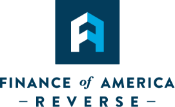Don’t think of reverse mortgages as complex. Think of them as unfamiliar. You can easily understand the basic concepts of a reverse mortgage, but many homeowners are unaccustomed to the language and terms used for these loans.
It would help if you familiarized yourself with the concepts and terminology of reverse mortgages. Doing so will help understand the key differences between reverse mortgages and their traditional (or forward) counterparts.
Loan repayment
In many ways, reverse mortgages are like traditional mortgages. If you treat a reverse mortgage the way you treat a forward mortgage, the results should be comparable. For example, if you make the same payments at the same interest rate over the same time period, a reverse mortgage will amortize in the same way and will end with no loan balance.
Most reverse mortgages, however, don’t require the borrower to make regular principal and interest payments. Consequently, the loan balance will rise over time. When the last borrower no longer occupies the home as their principal residence, the homeowner or their estate will often sell the house to repay the loan balance and receive any residual proceeds.
You’ll find that forward mortgages predominantly carry fixed interest rates. But the reverse mortgage insured by the Federal Housing Administration (FHA), known as a Home Equity Conversion Mortgage or HECM, will likely be an adjustable-rate mortgage or ARM.
According to the Federal Housing Finance Agency’s most recent annual housing report, fixed-rate mortgages account for more than 98% of the business done by Fannie Mae and Freddie Mac. By contrast, the most recent HECM report from the U.S. Department of Housing and Urban Development shows that adjustable-rate mortgages account for more than 99% of HECM business. The primary reason for this is that adjustable-rate HECMs allow for open-ended lines of credit in which homeowners have the flexibility to borrow funds over time as needed.
Common terms
Some of the terms used for reverse mortgages are not commonly found in traditional mortgages. You should become familiar with certain terms such as principal limit factors, mandatory obligations, financial assessment, life expectancy set-aside, and nonrecourse.
Although forward loan originators use the term loan to value (LTV) to describe the percentage of the home’s value for which a borrower may qualify, HECMs use principal limit factors. This term is used because reverse mortgages must consider the relevant ages and expected interest rates to determine how much principal may be offered to the borrower.
Mandatory obligations are items that must be paid off at closing, such as existing loan balances and closing costs. The reason reverse mortgages use this term is because it may dictate how much principal is available to the borrower during the initial disbursement period, which for most HECMs is the first 12 months.
All mortgages must go through underwriting to determine the sustainability of the loan. With HECMs, this process is called a financial assessment. It includes a review of each borrower’s credit history, property charge history, and residual income.
Depending on the financial assessment results, the lender may set aside a portion of the borrower’s principal limit — what’s called life expectancy set-aside or LESA — to pay homeowners insurance and property taxes each year over their expected lifetime. This is different than the traditional escrow account established for forward loans because it’s a one-time contribution rather than ongoing deposits.
All reverse mortgages in the U.S. are nonrecourse, meaning neither you nor their estate will owe more than the value of the home when the home is sold. This should give you peace of mind that you won’t be leaving your heirs with a bill if the loan balance rises above the value of the home or if the property value declines rapidly.
Planning tool
With a forward mortgage, the loan originator must match the client with the right product and repayment structure. Therefore, finding the right interest rate and repayment terms are primary concerns.
Reverse mortgage professionals, on the other hand, are trying to match you with the proper retirement-planning and cash-flow solution. As a result, the interest rates and repayment terms become secondary to the payout options.
In some cases, you may not have an immediate need for funds but want a secure (and growing) line of credit that will be available to pay for home care in several years. However, you may wish to draw monthly cash flow from their home equity nest egg.
Still, others may want to supplement their existing retirement income with regular monthly draws known as tenure payments. These payments will continue as long as the homeowner occupies the home and abides by the terms of the loan agreement.
Proprietary options
For some homeowners, a HECM may not be the best solution. Fortunately, many proprietary reverse mortgage products offer tailored solutions and more flexibility than a HECM.
For example, HomeSafe®, offered by Finance of America Reverse (FAR) LLC, allows homeowners to tap loans of up to $4 million and include features such as fixed-rate cash-out loans or a revolving line of credit. As reverse mortgages, these are still nonrecourse loans, and they don’t charge upfront or periodic mortgage insurance premiums.
As you can see, there are different types of reverse mortgage products to meet each borrower’s specific financial situation and goals.
Reverse mortgages, with their built-in consumer safeguards and flexible options for accessing equity are transforming the way people approach retirement. With any financial decision, it is essential to consider your options carefully. The right financial advisor can guide you to a great decision that works.
A version of this article appeared in the Scotsman Guide.
DISCLOSURES:
Oregon Only:·When the loan is due and payable, some or all of
the equity in the property that is the subject of the reverse mortgage no
longer belongs to borrowers, who may need to sell the home or otherwise repay
the loan with interest from other proceeds. FAR may charge an origination fee,
mortgage insurance premium, closing costs, and servicing fees (added to the
balance of the loan).·The balance of the loan grows over time and FAR charges
interest on the balance.· Borrowers are responsible for paying property taxes,
homeowner’s insurance, maintenance, and related taxes (which may be
substantial). We do not establish an escrow account for disbursements of these
payments. A set-aside account can be set up to pay taxes and insurance and may
be required in some cases. Borrowers must occupy home as their primary
residence and pay for ongoing maintenance; otherwise the loan becomes due and
payable. The loan also becomes due and payable (and the property may be subject
to a tax lien, other encumbrance, or foreclosure) when the last borrower, or
eligible non-borrowing surviving spouse, dies, sells the home, permanently
moves out, defaults on taxes, insurance payments, or maintenance, or does not
otherwise comply with the loan terms. Interest is not tax-deductible until the
loan is partially or fully repaid.
©2020 Finance of America Reverse LLC is licensed in 50 states
and D.C. | Equal Housing Opportunity | NMLS ID # 2285 |
www.nmls.consumeraccess.org | 8023 East 63rd Place, Suite 700 | Tulsa, OK 74133
Not all products and options are available in all states | Terms subject to
change without notice | AZ Mortgage Banker License #0921300 | Licensed by the
Department of Business Oversight under the California Residential Mortgage
Lending Act | Georgia Residential Mortgage Licensee | Illinois Residential
Mortgage Licensee | Kansas Licensed Mortgage Company | MA Lender/Broker #MC2855
| Licensed by the Mississippi Department of Banking and Consumer Finance |
Licensed by the New Hampshire Banking Department | Licensed by the N.J.
Department of Banking and Insurance | Licensed Mortgage Banker — NYS Banking
Department where Finance of America Reverse is known as FAReverse LLC in lieu
of true name Finance of America Reverse LLC | Rhode Island Licensed Lender |
HUD HECMS REQUIRE PAYMENT OF INITIAL AND PERIODIC MORTGAGE INSURANCE PREMIUM.
This article is intended for general informational and educational purposes only, and should not be construed as financial or tax advice. For more information about whether a reverse mortgage may be right for you, you should consult an independent financial advisor. For tax advice, please consult a tax professional.















I WANT TO KEEP UP TO DATE ON RETIREMENT TRENDS
Follow Us.